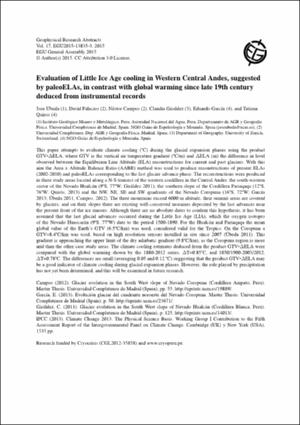Please use this identifier to cite or link to this item:
https://hdl.handle.net/20.500.12544/4390Files in This Item:
| File | Description | Size | Format | |
|---|---|---|---|---|
| Ubeda-Evaluation_little_ice_age_cooling_western_Central_Andes.pdf | 46.06 kB | Adobe PDF | View/Open |
This item is licensed under a Creative Commons License












